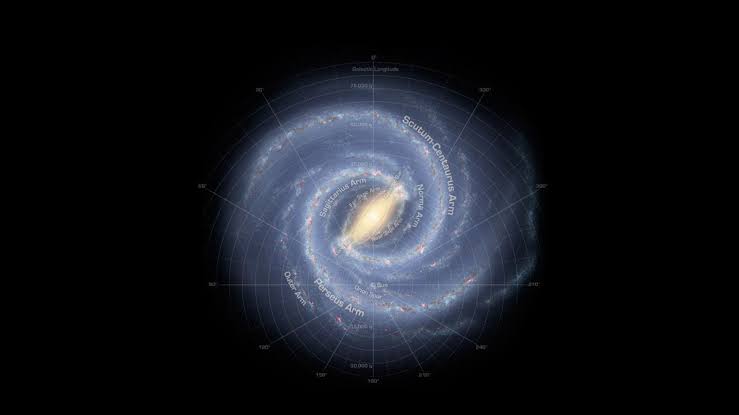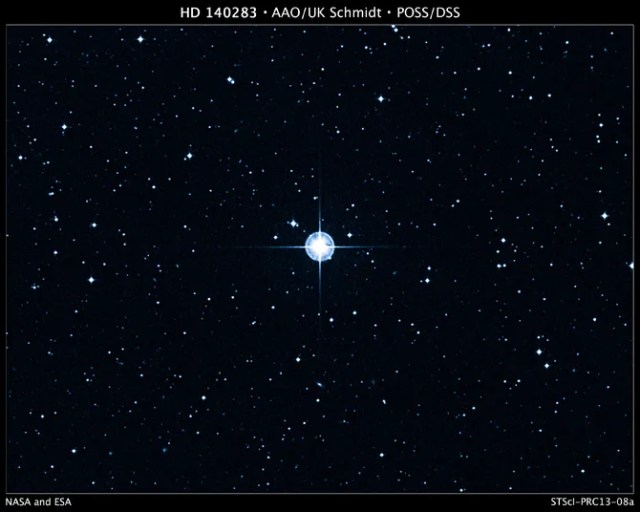Airbus Jr
Banned
Baffling mystery: Star that’s older than the universe
AUGUST 7, 2019 7:05AM
Dubbed the “Methuselah star”, HD 140283 is about 200 light-years away from Earth. It’s one of the oldest stars known.
Astronomers are stumped over a star that appears to be older than the universe.
So how is that possible? That’s the question that an international conference in California attempted to answer.
But instead of solving the mystery, theorists are now questioning whether there is something wrong with the current scientific model of the universe — based on Einstein’s famous theories.
The best estimates put the universe’s age at about 13.8 billion years. But the star, HD 140283, appears to be 14.5 billion years old — a difference of 0.7 billion years.
“It’s a riddle of cosmic proportions: How can the universe contain stars older than itself?” physicist Robert Matthews wrote for The National.
“That’s the conundrum now facing astronomers trying to establish the age of the universe — and its resolution could spark a scientific revolution.”
“Astronomers now know it contains very little iron — which means it must have been formed before this element became common in the universe,” Dr Matthew wrote.
“And that implies HD 140283 must be almost as old as the universe itself.”
So what should we make of the discrepancy?
The exact age of the universe is imprecise. Scientists say it could be 800 million years younger or older.

According to Dr Matthews, new research into gravitational waves could also resolve the paradox.
Einstein’s famous theory of gravity is also in the spotlight.
His general theory of relativity, one of the towering achievements of 20th-century physics, is one of the most successful theories devised.
It’s also been repeatedly backed by observational evidence.
But Dr Matthews said applying the theory to the whole universe had led to surprising results.
“In the meantime, theorists have been busy dreaming up new physics that might solve the problem,” he wrote.
AUGUST 7, 2019 7:05AM
Dubbed the “Methuselah star”, HD 140283 is about 200 light-years away from Earth. It’s one of the oldest stars known.
Astronomers are stumped over a star that appears to be older than the universe.
So how is that possible? That’s the question that an international conference in California attempted to answer.
But instead of solving the mystery, theorists are now questioning whether there is something wrong with the current scientific model of the universe — based on Einstein’s famous theories.
The best estimates put the universe’s age at about 13.8 billion years. But the star, HD 140283, appears to be 14.5 billion years old — a difference of 0.7 billion years.
“It’s a riddle of cosmic proportions: How can the universe contain stars older than itself?” physicist Robert Matthews wrote for The National.
“That’s the conundrum now facing astronomers trying to establish the age of the universe — and its resolution could spark a scientific revolution.”
“Astronomers now know it contains very little iron — which means it must have been formed before this element became common in the universe,” Dr Matthew wrote.
“And that implies HD 140283 must be almost as old as the universe itself.”
So what should we make of the discrepancy?
The exact age of the universe is imprecise. Scientists say it could be 800 million years younger or older.
According to Dr Matthews, new research into gravitational waves could also resolve the paradox.
Einstein’s famous theory of gravity is also in the spotlight.
His general theory of relativity, one of the towering achievements of 20th-century physics, is one of the most successful theories devised.
It’s also been repeatedly backed by observational evidence.
But Dr Matthews said applying the theory to the whole universe had led to surprising results.
“In the meantime, theorists have been busy dreaming up new physics that might solve the problem,” he wrote.
Last edited:


